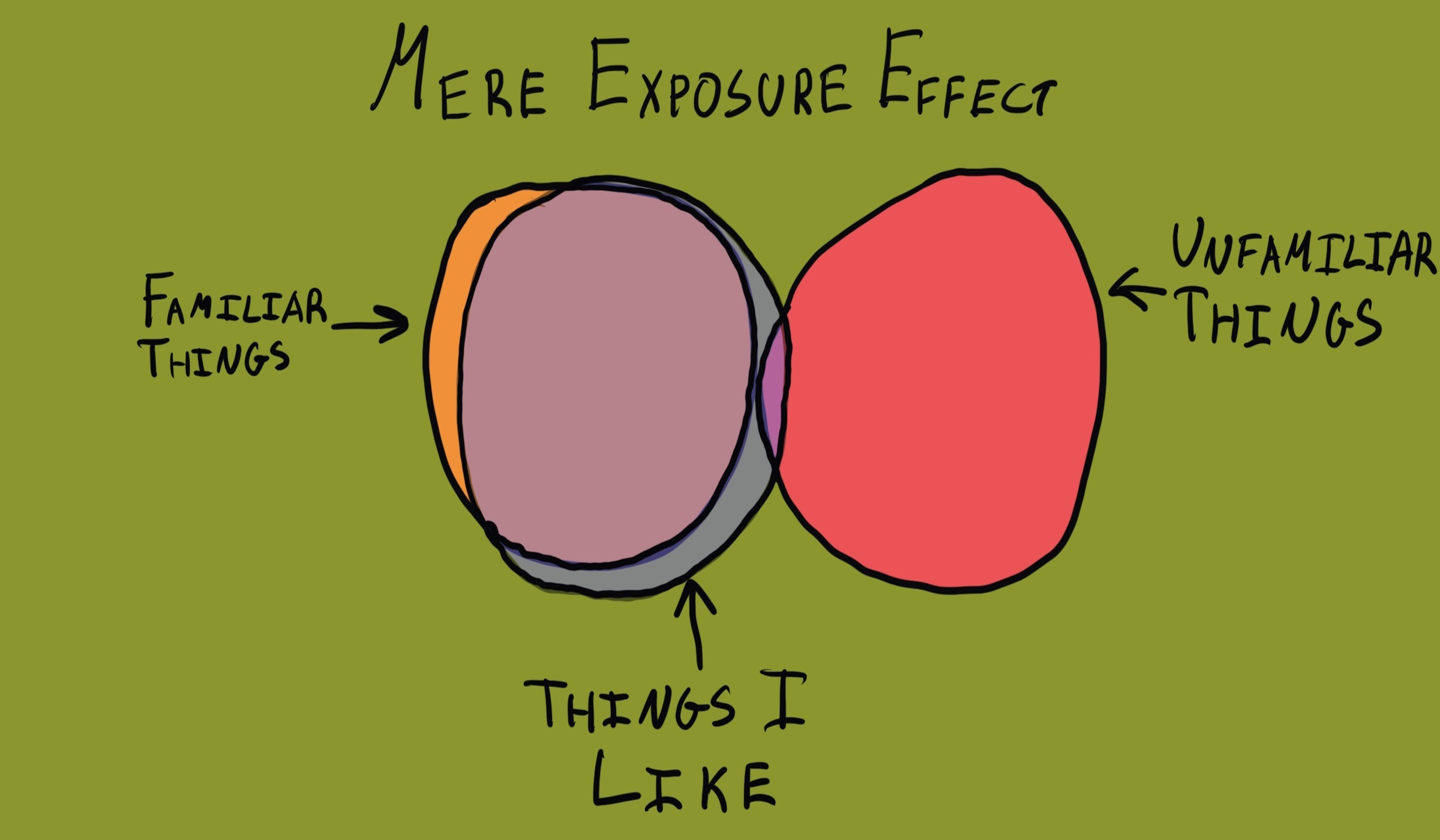The mere exposure effect is a cognitive bias that occurs when individuals develop a preference for people, places, or things they are repeatedly exposed to. Simply put, familiarity breeds liking. The more exposure someone has to something, the more they tend to like it.
Explanations:
The mere exposure effect is rooted in the idea that familiarity reduces uncertainty and discomfort. When people are repeatedly exposed to something, they become more comfortable with it, and this increased comfort leads to a preference for that thing.
Examples:
Music: A person may develop a liking for a song that they initially didn’t care for after hearing it repeatedly on the radio.
Brand Loyalty: Consumers often prefer brands they are familiar with due to repeated exposure to their advertisements.
Social Preferences: Individuals may become more attracted to someone in their social circle after spending more time together.
Solutions:
Awareness: Be aware of the mere exposure effect and its potential influence on your preferences.
Diverse Exposure: Expose yourself to a variety of people, places, and things to avoid undue preference for the familiar.
Critical Evaluation: When forming preferences or making decisions, consider factors beyond mere exposure, such as actual quality and compatibility.
Balancing Novelty: Embrace novelty and new experiences to expand your preferences and avoid excessive reliance on familiarity.
Addressing the mere exposure effect involves recognizing the natural tendency to prefer things merely because they are familiar. By actively seeking diversity and using critical evaluation in decision-making, individuals can reduce the impact of this cognitive bias on their preferences and choices.
